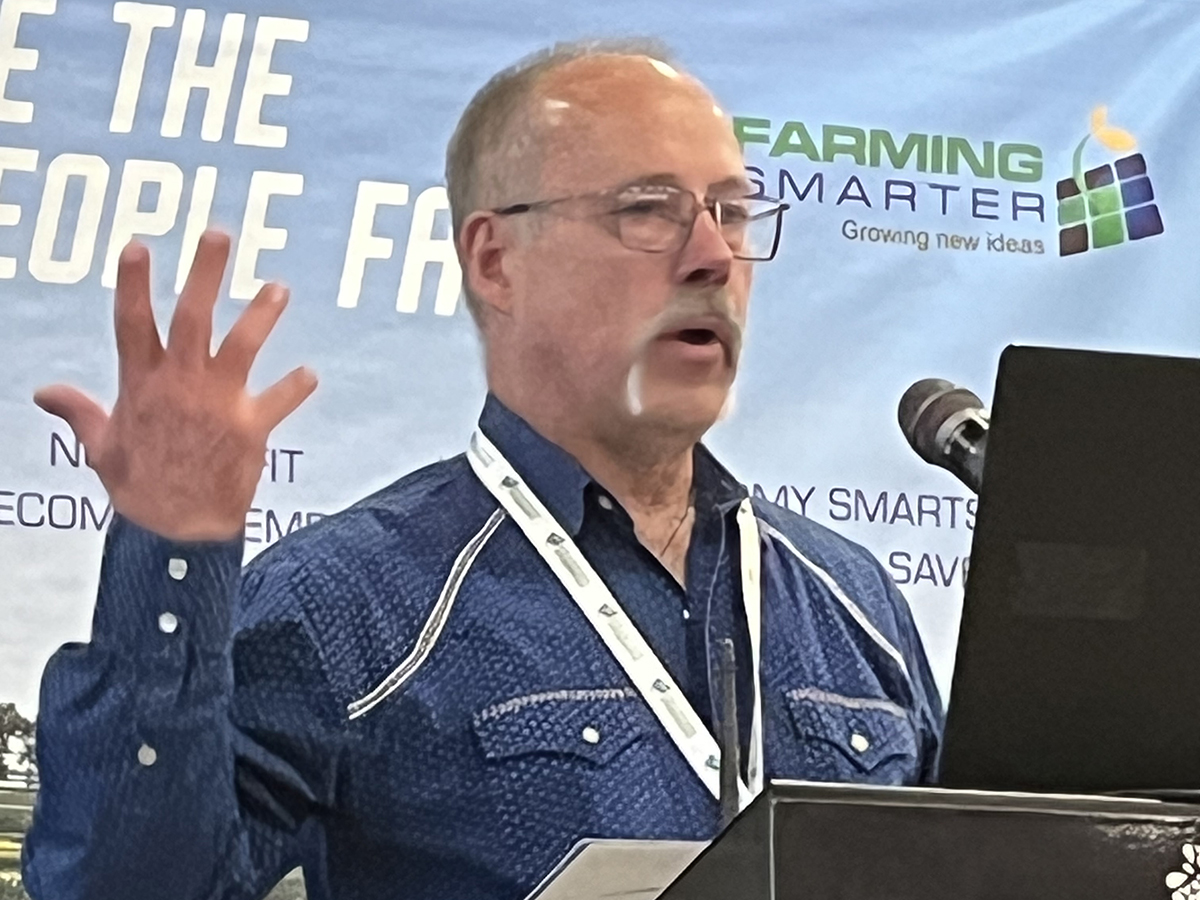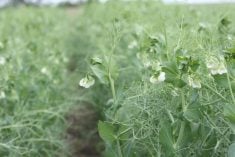Economic sustainability often gets lost in the federal push toward environmental sustainability in agriculture, says Stuart Smyth of the University of Saskatchewan.
“If it weren’t for the economic sustainability, there wouldn’t be any environmental sustainability,” Smyth told the recent Farming Smarter Conference and Trade Show in Lethbridge..
Innovation in farming has made the practice more environmental, he said.
Read Also

Canola oil transloading facility opens
DP World just opened its new canola oil transload facility at the Port of Vancouver. It can ship one million tonnes of the commodity per year.
While organic farming until about 1960 required more land to produce more food, agriculture has since then been able to increase food production by almost 400 per cent while using only 10 more per cent land, Smyth said. The huge gains in efficiency have been from greater crop genetics and synthetic fertilizer and pesticides.
“We still have problems with food insecurity,” he said.
“There’s roughly 800 million people who are food insecure today, so we have not solved that issue, so it’s going to take a lot of time and a lot of investment for credible changes.”
Smyth was in Montreal a couple of years ago when a convention on biodiversity was being held. Out of an agreement came a global biodiversity framework calling for 50 per cent reduction in the use of pesticides by 2030 and a reduction of 30 per cent in synthetic fertilizer. Environment Canada ratified those policies, and Smyth doesn’t think the media has adequately voiced their impacts.
A lot of what was arrived at from the biodiversity framework came from the European Union, but it was rejected last June in elections to the European Parliament. However, Smyth said the strategy is being reworked and will be reintroduced this year, including tripling organic production.
This summer, Europe is going to ban the use of copper sulphate, which is the predominant pesticide that the organic sector uses to control insects and some weeds.
“So they want to triple production and take away the organic sector’s most important chemical. so what is going to happen to those organic fields? There is no way they can even be sustained. Their yields are going to go down so they’ll have to triple the fields. So Europe is going to be increasingly food insecure,” said Smyth.
“Europe is as wealthy as we are, they can buy food wherever they want. But what that does is it puts pressure on other developing countries to produce food. It puts pressure to feed Europe, it puts pressure on Brazil to cut down more rain forest. Then what does the European environmental groups do? They criticize Brazil for cutting down the rain forest. Well, they are cutting it down to feed you because you won’t adopt innovative crop technologies.”
Smyth showed western Canadian innovation front and centre in his presentation. He said only three per cent of cropland in Saskatchewan was tilled on an annual basis in 2016, while in Europe the pracitce ballooned to 75 per cent.
“Governments and environmental groups from Europe will stand up at every international conference and champion how they are leading sustainability at a global level. Nothing could be further from the truth. They are the least sustainable producers of food of anywhere on the planet,” said Smyth.
“Canadian farmers, particularly from the Prairies, I would put up against any farmers in the world. We are the most sustainable producers of food on the planet. We may not be number one in every single category, but when you look across the spectrum, no one is doing a better job than we are.”
Smyth said the number of acres of summer fallow has plummetted across the Prairies in the last 110 years. The practice spiked in the 1960s and early 1970s with Saskatchewan leaving more than 25 million acres fallow. Now, the Prairies have slightly more than 1.2 million acres across three provinces.
“The fact we have been able to remove this many millions of acres of summer fallow on an annual basis is a good part of why we are so sustainable in the Prairies,” said Smyth.
He argued that the message the United Nations’ Food and and Agriculture Organization has spread is dangerous for food security. Smyth said the FAO believes the future of food security lies in the return to small farms run by organic producers. Smyth stresses the message needs to be flipped to promote what western Canadian farmers have done with decades of proof.
“Producers here have been demonstrating here for 30 years how to successfully transform food systems. We don’t need to transform food systems; we have transformed our food systems. We have gone away from tillage and soil erosion and loss of moisture conservation. We are leading the world in sustainable food systems. The world needs to emulate what we are doing,” said Smyth.
The adoption of genetically modified crops and the efficient use of weed control that was gained from them were the main drivers of the transition, he added, along with equipment improvements.
“When herbicide-tolerant crops came along, they really perfectly aligned with where the min-till, zero till equipment technologies were and worked together to elevate.”
In a survey conducted in 2006, farmers said overwhelmingly (91 per cent) that glyphosate was the reason they were able to keep summer fallow out of their crop-rotation practices.
Smyth added that in December 2021, Environment Canada announced a mandatory 30 per cent reduction in nitrogen fertilizer emissions. The department backed off a year later, saying it would be voluntary rather than mandatory.
“We have shown there has been a 102 per cent increase in fertilizer. Twenty-two per cent of that is due to the fact we no longer have summer fallow. Simply, that increase in seeded acres from one year to the next accounts for a little over 20 per cent of all that fertilizer use,” said Smyth.
“We are trying to tell policy makers that you can’t focus simply on the amount of fertilizer applied to a field. You have to look at what the yield impact is. What we are advocating to policy makers over the last years is saying, you have to look at fertilizer use efficiency. You have to look at how many bushels are produced per pound of fertilizer applied. Looking at it that way, our fertilizer use efficiency has gone up by 28 per cent. Our yields have gone up, we are using more fertilizer, but we are doing so much more sustainably.”
He said part of the problem with modeling data is that changes in agriculture do happen, but they do not happen in a window of less than 10 years. Lots of changes in farming sustainability have happened over 25 to 30 year periods, with many environmental initiatives rushed and unrealistic.
“Farmers are willing to be sustainable, but you can’t force them to be sustainable through regulating agriculture. it has to be done based on market incentives,” said Smyth.
In the 1990s, 45 per cent of nitrogen was applied post harvest, and it is now down to 31 per cent. reducing the post harvest applications by a third. Depending on the moisture that falls in winter and spring, this reduces the chance for those nutrients to end up in the watershed.
Smyth said he has compared the environmental impacts of the top five herbicides used in the early 1990s to the top five herbicides used in the late 2010s. His studies have found a transition to all foliar applications from soil-incorporated herbicides that have residual effects on the crop plantd the following year.
“The environmental impact of herbicides is down by 65 per cent. Plus, we are putting on 45 per cent less active ingredient per acre than we were doing 25 to 30 years ago. The global biodiversity framework said they wanted a 50 per cent reduction…. We are virtually there. yet no policy maker in Ottawa knows this information,” said Smyth, adding he approached CTV and CBC with an offer to do cross-country interviews on radio or TV talking about the success of Canadian farmers, but received zero queries.

Smyth said policy makers in Ottawa have to properly analyze data given to them about the successes Canadian farmers have had. Agriculture Canada shows that agriculture’s greenhouse emissions are 10 to 12 per cent, but posts continue to go up on social media saying that livestock are the leading cause of climate change.
“What they don’t factor in there is how much carbon is sequestered through grass and forage production,” said Smyth, adding he had a grad student defend his thesis looking at how much carbon was sequestered through the production of hay.
“He estimated it is about 16 to 17 per cent of total emissions are offset by the carbon sequestered through hay production. Later this year, we will be doing a survey to get a sense of how much carbon is sequestered through pasture. We’ve estimated it could be triple what is done through forages.”
Smyth said part of the problem when trying to balance economic and environmental goals in agriculture is trying to force through cookie cutter legislation implying all producers are on the same playing field.
“For a large part of the national discussions around agriculture, there needs to be a two policy strategy. We really need to look at dryland farming across the Prairies versus what goes on in southern Ontario and Quebec and in the Maritimes, where they have far more moisture than us,” said Smyth.
“Trying to put a single policy that will basically apply to all farmers in Canada is really not working when you have to bring in some of the challenges and aspects of dryland agriculture. I think a really important thing is to try and get a value on carbon sequestration because there are billions of dollars being left on the table from the amount of carbon your farms are sequestering.”

















